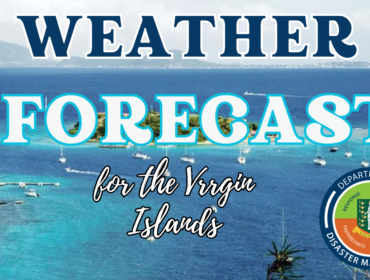Forecasters at
the National Oceanic and Atmospheric Administration (NOAA) in the United States
have raised the likelihood for a below-normal Atlantic hurricane season.
The update,
issued in August and posted on the NOAA website, “predicts a 70 percent chance
of a below-normal season, a 25 percent chance of a near-normal season and only
a five percent chance of an above-normal season. The probabilities in the
initial outlook issued on May 22 were 50 percent, 40 percent and 10 percent,
respectively.”
According to
the NOAA, there is a 70 percent chance of seven to twelve named storms,
including three to six hurricanes, of which zero to two could become major
hurricanes. The initial outlook in May predicted eight to thirteen named
storms, three to six hurricanes and one to two major hurricanes.
The revised
predictions are based on the development of atmospheric and oceanic conditions
that are likely to suppress cyclone formation and forecasters expect this to
continue throughout the season.
Providing
further detail on its revised forecast, the NOAA states that inhibiting
atmospheric conditions include “strong vertical wind shear, a weaker West
African monsoon, and the combination of increased atmospheric stability and
sinking motion. These conditions mean fewer tropical systems are spawned off
the African coast, and those that do form are less likely to become
hurricanes. These conditions are stronger than originally predicted in May
and are expected to last mid-August through October, the peak months of the
hurricane season.”
With regard to
oceanic conditions, the NOAA explains that factors here include “below-average
temperatures across the Tropical Atlantic, which are exceptionally cool
relative to the remainder of the global Tropics. This cooling is even stronger
than models predicted in May and is expected to persist through the hurricane
season.”
El Nino which
refers to warmer than average sea-surface temperatures,
was also flagged as an inhibiting factor. El Nino is still likely to develop
according to forecasters and this is likely to “suppress storm development by
increasing vertical wind shear, stability and sinking motion in the atmosphere.”
Professors
Phillip J. Klotzbach and Wiilliam M. Gray at Colorado State University have
also issued a revised forecast which continues to indicate a less active than
normal Atlantic hurricane season that normal. Their initial forecast called for
10 named storms, four hurricanes and one Category 3 or higher hurricane while
the revised forecast calls for nine named storms, three hurricanes and one
Category 3 or higher hurricane.
A third hurricane season outlook, this one by Weather
Services International, has reduced the
number of predicted storms to 10 named storms, five hurricanes and two major hurricanes, down from its previous forecast of 11 named
storms, five hurricanes and two major hurricanes.
Despite the
revised predictions, the Department of Disaster Management (DDM) continues to
advise residents to be prepared. Information and Education Manager, Ms.
Philomena Robertson said, “Forecasters have modified their predictions slightly
downwards but the fact is we are still in the hurricane season. It only takes
the impact of one storm to create a disaster. We therefore urge to remain alert
and adhere to the advice provided by the DDM as it relates to hurricane
preparedness.”
In messages
delivered at the start of the hurricane season, both the Governor and the
Premier called on residents to Be Smart, Reduce Risks
and Be Prepared by taking the necessary measures to reduce vulnerability. The
Atlantic hurricane season runs from June 1 to November 30.
Photo Credit: National Oceanic and Atmospheric Administration
(NOAA).



